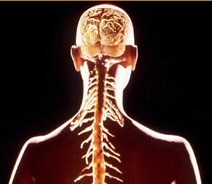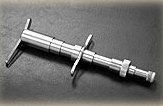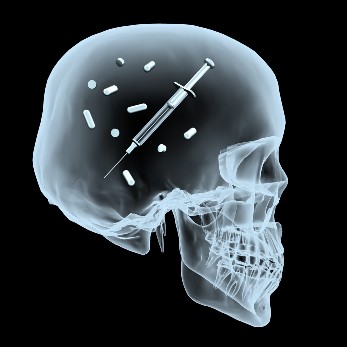|
TRT Seminar Dates: TRT Advanced Workshops: Auriculotherapy Training Dates: |
NATURAL SOLUTIONS TO ADDICTION... |
|
||||||||||||||||||||||||||||||||||||
|
C.A.N. – CONTROLLING ADDICTION NATURALLY ADDICTION – HOW BIG A PROBLEM?
SUBSTANCE ABUSE: SNAPSHOTS OF THE SIZE OF THE PROBLEM:
And these make-up only a small part of the puzzle comprised of the addictive and compulsive disorders! THE FIVE ADDICTIONS:
Scientists working in different scientific disciplines have arrived at the common theoretical belief that the core of impulsive, addictive, and compulsive behaviours is biological in nature and is probably a variant of our primitive nature. Scientists from the fields of addiction medicine, biochemistry, electrophysiology, genetics, molecular genetics, pharmacology, subluxation correction, acupuncture, auriculotherapy, and psychology have contributed to our knowledge of addictions. The ground breaking “Biogenic” model of addiction explores the genetic variants and predispositions, diagnosis, psycho-neurological biology, and evidence base for a range of therapeutic interventions. (As published in the Journal of Psychoactive Drugs: Reward Deficiency Syndrome: A Biogenetic Model for the Diagnosis and Treatment of Impulsive, Addictive and Compulsive Behaviours, November 2000, Vol 32, Supplement.) The five addictions of drugs, work, food, sex and gambling are seen to be connected via the dopamine D2 receptor and its role in reward mechanisms. When dopamine (DA) is released into the neuronal intersections, it stimulates a number of receptors which result in increased feelings of well-being and stress reduction. A consensus of the literature suggests that when there is a dysfunction in the brain reward cascade, which could be caused by certain genetic variants (polygenic), especially in the DA system causing a “hypodopaminergic trait”, the brain of that person requires an additional DA fix to feel good. Alcohol, cocaine, heroin, marijuana, nicotine, and glucose all cause activation and neuronal release of brain DA, which could synthetically satiate the abnormal cravings. THE GENETIC CONNECTION: In normal individuals, neurotransmitters work together in patterns of stimulation or inhibition, the effects spreading downward from complex stimuli to complex patterns of response like a chemical cascade, leading to feelings of well-being and reward. If a genetic deficiency blocks or distorts this cascade, the result is a tendency toward anxiety, anger, low self-esteem or other ‘bad feelings’, or toward craving for a substance or behaviour that will make the bad feeling go away. A lack of D2 receptors causes individuals to have a high risk for multiple addictive, impulsive and compulsive behavioural propensities, such as severe alcoholism, cocaine, heroin, marijuana and nicotine use, glucose bingeing, pathological gambling, sex addiction, ADHD, Tourette’s Syndrome, autism, chronic violence, post-traumatic stress disorder, schizoid/avoidant cluster, conduct disorder and antisocial behaviour. Kenneth Blum, the discoverer of the D2Dopamine defect, defined this hypo-dopaminergic trait as a “Reward Deficiency Syndrome”. THE NEURO-BIOLOGICAL ROOT – BRAIN REWARD CASCADE AND REWARD DEFICIENCY SYNDROME:
The Reward Deficiency Syndrome (RDS) model is a modification of Milam’s Biogenic Paradigm and also supports its view (Blum et al. 1996b, c, 1995c, d) that alcoholism is a primary addictive response to alcohol in a biologically susceptible drinker, regardless of character and personality. THE REWARD GENE: Addicts crave when they have the means and access to mood altering substances and behaviours, and if access has been denied, their craving returns when cues reappear. Even after prolonged abstinence, craving remains, sometimes moving to other dimensions, such as socially acceptable activities (e.g. compulsive work) or negative behaviours (e.g. compulsive sex). As such many addicts are found to have their “boots in more than one camp”; combined and multiple addictive and/or compulsive disorders being common. The approach for Reward Deficiency Syndrome treatment has its theoretical foundations in cognitive behavioralism, unlike reward-punishment behaviour modification-based programming. We know that substances such as alcohol, cocaine, morphine, nicotine, and sugar, as well as behaviours like gambling and sex, preferentially release dopamine at the nucleus accumbens in the limbic system (the reward site). This allows us to perceive and explain the commonality of a number of seemingly diverse addictions based on shared genetics and neurochemistry. The RDS treatment program is designed to change the maladaptive behaviours which naturally accompany the deficit in the brain reward cascade. This paradigm shift leads to an evolution from therapies founded on correcting deficient character traits, to modalities capable of correcting or at least improving the biological bases to these illnesses. Click Here For RDS Scientific References COMPULSIVE DISORDERS INCLUDING ADHD:
Individuals having attention deficit disorder with hyperactivity and persons with certain personality types (i.e. schizoid/avoidant) may be at high risk for subsequent addictive behaviours and require special early intervention due to their genetic make-up. As such most of the compulsive disorders are seen as intimately related to the addictive disorders, requiring similar management strategies. ESTABLISHED METHODS WHICH HELP: We know that addiction to drugs involves three important basic elements: The physiological, psychological, and spiritual. Any treatment and/or recovery begins with the acceptance that one cannot control the disease and assistance is required, thus invoking a well established pattern that leads to the Twelve Steps program or other similar spiritual guidelines. Counselling, lifestyle coaching, self-esteem building, and psychosocial methods of relapse prevention all play important roles in resolving the multi-levelled issues during recovery. The classical medical approach has been to support the psychosocial rehabilitation with a range of pharmacologic interventions to assist with pain and withdrawal management on the one hand, to replacing the substance of abuse with chemicals perceived to be more clinically and/or socially acceptable on the other. REVOLUTIONARY NATURAL TREATMENTS: Because of the complex interplay between addictive and compulsive disorders and the dependence on mood altering substances, it has been argued that the use of “therapeutic” psychoactive drugs may be counterproductive in the long term: Much like fighting fire with fire. And if the basis to these disorders is as much biological as behavioural, then solely psychosocial strategies can be frustratingly difficult for the clients: As such retention rates suffer, and the withdrawing addict is placed in an overwhelmingly difficult battle to conquer their shortcomings and to develop their willpower. What then if there were strategies to naturally bolster and repair the physiological struggles trapped inside the addict’s body, soul and spirit? There is growing evidence that this approach may actually offer the missing piece of the addiction recovery jigsaw puzzle. CHIROPRACTIC Chiropractic emphasizes the inherent recuperative power of the body to heal itself without the use of drugs or surgery. The practice of chiropractic focuses on the relationship between structure (primarily of the spine) and function (as coordinated by the nervous system) and how that relationship affects the preservation and restoration of health. The foundation of chiropractic has always rested on the supremacy of the neurological systems over every other body system, and that Chiropractic intervention aims to improve neurological function. Recent research conducted in the United States demonstrated dramatically improved drug rehabilitation outcomes when chiropractic care was included as part of standard addiction rehabilitation. Reduced anxiety and depression levels, less need for strong pain relief and psychiatric drugs has also been a result of this treatment. Numerous research studies have shown benefits to a long list of health disorders with chiropractic care that have also highlighted recent discoveries about the chemistry and function of the central nervous system, successfully closing the gap between chiropractic theory and practice. Research suggests the spine may be an anatomical extension of the limbic system, the site where feelings are mediated. We know that many naturally occurring brain and spinal cord substances play a role in both emotions and pain reduction, leading to an increased sense of wellbeing. The role of the chiropractic spinal adjustment in removing neurological interference and in augmenting this neurological state of wellbeing is the subject of numerous past and current research projects. Click Here For Chiropractic Scientific References SUBLUXATIONS
AURICULOTHERAPY Auriculotherapy is a therapeutic intervention in which stimulation of the auricle of the external ear is used to alleviate health conditions in other parts of the body. While originally based on the ancient Chinese practice of acupuncture, the somatotopic correspondence of specific parts of the body to specific parts of the ear was first developed in France.
Research studies in China and the US verified the scientific accuracy of auricular diagnosis. In China the ear points of over 2,000 patients were assessed, recording which points correlated with certain diseases and ear points lead to reduction of medical symptoms. Auriculotherapy is sometimes referred to as ear acupuncture but it uses no needles and does not rely on the meridian system. A microcurrent stimulator is placed on reflex points on the outside of the ear. These points then send a message to the brain based on the location of the reflex point being treated. Most people feel only a tiny tingling at the ear reflex points during treatment. Microcurrent is used in preference to needles, acupressure, laser and other forms of current (e.g. TENS), as this best matches the natural frequencies of the nerves being treated. Hence Micro-current is attempting to normalize abnormal nerve activities. The design features of modern Auriculotherapy instruments (e.g. StimplusPro) have the advantage of being able to locate the active reflex points, as well as treat. Auriculotherapy offers advantages over the more traditionally utilised ear acupuncture in reduced costs with no disposable needles, less practitioner contact time, reduced infectious disease risks as there is no skin piercing, improved diagnosis and location of points, removal of the psychosocial issue of using needles in this population, reduced treatment time, utilisation of internationally and scientifically accepted treatment points. Research suggests that this modality assists with issues of withdrawal, craving, pain management, depression, anxiety, and impulsiveness. Long term follow up of drug related offenders showed amazing reduction in the number of re-arrests in those who received Auriculotherapy as part of their rehabilitation and hence should be made available on a regular ongoing basis during the recovery process. Click Here For Auriculotherapy Scientific References NEUTRICEUTICALS Neutriceuticals are nutrients used at levels to achieve pharmacologic like changes in the body in order to aid the brain and nervous system to increase the level of chemicals necessary to make specific neurotransmitters. These same neurotransmitters are also deficient in ADHD sufferers. These messengers communicate a feeling of calmness and wellbeing to the brain.
Combinations of select high quality amino-acids, glycoproteins, vitamins and minerals have been shown to measurably increase certain important neurotransmitters in the brain. These include serotonin, endorphins, dopamine, GABA; the four neurotransmitters responsible for brain reward. Dopamine, when it works in the part of the brain called the ‘reward site’, is considered the pleasure molecule and the anti-stress molecule. Aberrant craving behaviour for all forms of cocaine and amphetamines occur when there is a deficiency of brain dopamine. The amino-acid and related formulas can be designed to bring about natural feelings of well-being; provide nutritional support in recovery for those with RDS; reduce post-abstinence withdrawal symptoms including cocaine dreams; reduce cravings; reduce stress responses. Click Here For Neutriceutical Scientific References OTHER NATURAL MODALITIES: Any number of natural therapies ranging from full-body acupuncture to massage, vitamin supplements to structured dietary regimes, exercise to meditation, hypnosis to prayer can also be argued to be of benefit to the recovering addict. Each should be carefully considered in the management of each individual case, and preference should be given to modalities with some evidence of clinical benefit. PIECING TOGETHER THE RECOVERY JIGSAW PUZZLE: Once one grasps the genetic and neurobiological contribution to addictive and compulsive behaviours, and adds to this the vast psychosocial aspects involved in the development of crippling, long term illness; it becomes apparent that specialised and advanced recovery strategies are required from a wide range of craft-groups to symbiotically contribute to effective solutions for the addicted client. For example the Chiropractor just offering subluxation correction to an addicted patient would be leaving that person in a vulnerable position, attempting to handle their withdrawal, social, spiritual and psychological recovery alone. A psychologist or counsellor believing they can rehabilitate the behavioural inconsistencies and flawed self-belief systems will be guaranteeing the client an uncomfortable and incomplete recovery of their brain reward systems without strategies to fill this biological void. The medical professional offering pharmacologic intervention only, may be contributing to the substitution of one substance abuse for another. And the case managers, social workers, and carers helping the addict to piece their life back together; may remain trapped in the frustrating world of repeated withdrawal and relapse unless supported by a team of professionals positioned to improve clinical outcomes. RECOVERY RECOMMENDATIONS: A recovery program should provide a multimodal, holistic process which maximises recovery from the negative consequences of substance abuse, maximises opportunity for sustained abstinence, minimises risk of relapse, and restores a healthy state of wellbeing. The multimodal approach combines accepted psychosocial methods of assisting recovery, with some less “mainstream” evidence-based complementary health care practices... RECOVERY SERVICES OVERVIEW:
PROGRAM OVERVIEW: The services provided will be prescribed in a manner deemed clinically necessary to maximise the chances of sustained abstinence and continued recovery. In general clients should initially be attending group 1-2 times weekly, attending counselling at least once weekly, receiving Auriculotherapy and Chiropractic care three times weekly, taking supplements daily if indicated, exercising 3-4 times weekly, communicating with their mentor daily. The regularity and timing of each of these activities will be reviewed and modified each 30 days. SELECTION AND INTAKE OF CLIENTS:
OUTCOME ASSESSMENTS: A mixture of outcome tools will be utilised to assess success of recovery in the following areas: 1) Retention rates: 2) Successful abstinence: The most effective means of testing for successful abstinence is clean urinalysis: Clients will be expected to consent to urine testing from time to time; either on a randomised basis or as indicated by suspicions of relapse by the practitioners. 3) Signs of relapse: Symptoms of depression and anxiety have been implicated in probabilities of relapse. These symptoms will be observed with the expectancy of progressive reduction throughout the program: Depression and Anxiety questionnaires will be administered at least monthly to quantify symptoms. 4) State of wellbeing: Patients who display a high “state of wellbeing” would be considered to be at decreased risk of relapse and failure. Measures of this state would be expected to increase throughout the program: Blanks state of wellbeing inventory will be administered at least monthly to quantify the patient’s state of wellbeing. 5) Physiological markers: Non-invasive tests will be administered which are utilised as outcome assessments for the clinical effectiveness of the complementary (“CAM”) health care services: These markers individually and collectively would be expected to progressively improve throughout the program if the CAM modalities are assisting the recovery process and may include. a) Postural assessment. b) Spinal flexibility measurement. c) Paraspinal surface electromyography. d) Paraspinal infrared thermography e) Brain EEG f) Heart Rate Variability SPECIAL NEEDS:
ABOUT THE AUTHORS: Dr Jay Holder is a Doctor of Chiropractic, Certified Addictionologist, Director American College of Addictionology and Compulsive Disorders, and President Holder Research Institute. Director and Founder of Exodus Treatment Centre, a 350-bed addiction facility located in Miami, Florida. Director and Founder of Exodus Israel Addiction and Research Centre, Jerusalem, Israel. The 1993 United States Senate compared Dr Holder's Success in research to Michael Jordan's performance in basketball. Dr Holder’s work was recently featured on a Discovery Health Channel documentary. Developer of Torque Release Technique, discover and developer of the Foundation Point System and Addiction Axis Line in Auriculotherapy. Dr Nick Hodgson has been in private practice as a Chiropractor or the past 20 years and was named Victorian Chiropractor of The Year 2005. As President of the RMIT Chiropractic Alumni Association (CARPP), he has been responsible for introducing training in Torque Release Technique, Auriculotherapy and Addictionology to the Australian Chiropractic profession and now to other health care professions, and has been personally mentored by Dr Jay Holder. Nick is a 1990 graduate of the Phillip Institute of Technology (now RMIT) where he received the academic award for Chiropractic Science. Nick has been recognised by both the CAA(Vic) and RMIT Alumni for his contributions and service to the chiropractic profession. Nick is a Fellow of the Holder Research Institute (F.H.R.I.), and has completed five of the ten modules of the Certified Addictionologist (CAd) program. Kate Campbell is a highly respected editor and publisher with international marketing and communications experience. She has written and produced training, marketing, advertising, dramatic and fictional materials for publishing companies such as Reader’s Digest, Time Warner, Harper Collins, and the Integrated Medicine Institute in Hong Kong. She has a Bachelor of Arts, Postgraduate Diploma in Education, and is completing a Master of Education in Professional Development. Click Here To Learn About Specialised Training In This Field... |
|
|||||||||||||||||||||||||||||||||||||
|
Main Page About TRT The Integrator Research Video Audio Directory TRT Training Testimonials BLOG Products Site Map Contact Us Torque Release Technique (TRT) is the first Chiropractic Technique to be created through a rigorous scientific research and development process. TRT aims to improve health and wellbeing by improving Nervous System function via specific Adjustment of Primary Subluxations. TRT is an extremely gentle chiropractic method and has been published in major Medical and Chiropractic Journals and featured on the Discovery Health Channel. © Dr Nick Hodgson 2009 2005 Victorian Chiropractor of The Year, Australasian TRT Training Provider, Fellow Holder Research Institute. Visit Nick's other web site at www.superhealthy.com.au |
|





 There
are individual, family, community, national and global scenes of immense
distress and pain in living and coping with addictive and compulsive behaviours,
that costs our communities billions of dollars. Any addict’s journey takes them
firstly, in pursuit of another time and space, and into a growing loss of trust
by all sides, daily and sometimes even hourly disorder, depression and despair.
How can we improve our understanding, care and addiction recovery approaches to
ensure that we are all working towards our greatest human potential?
There
are individual, family, community, national and global scenes of immense
distress and pain in living and coping with addictive and compulsive behaviours,
that costs our communities billions of dollars. Any addict’s journey takes them
firstly, in pursuit of another time and space, and into a growing loss of trust
by all sides, daily and sometimes even hourly disorder, depression and despair.
How can we improve our understanding, care and addiction recovery approaches to
ensure that we are all working towards our greatest human potential? Craving
for mind altering substances and behaviours is a malfunction of the reward
centres of the brain, involving the neurotransmitters and the enzymes that
control them. Many years of research have established that pleasure-seeking has
as its physiological basis the interaction of neurotransmitters in a cascade
fashion centred in the mesolimbic structures of the brain.
Craving
for mind altering substances and behaviours is a malfunction of the reward
centres of the brain, involving the neurotransmitters and the enzymes that
control them. Many years of research have established that pleasure-seeking has
as its physiological basis the interaction of neurotransmitters in a cascade
fashion centred in the mesolimbic structures of the brain. Reward
Deficiency Syndrome behaviours are multifaceted ranging from a variety of
substance use disorders to conduct disorder in adolescents. However they are all
spurred by impulsive, addictive, and/or compulsive drives and derive from a
deficit in the function of dopamine in the nucleus accumbens in the mesolimbic
system of the brain. We can assume that it is such a basic part of the brain, it
is fundamentally essential to life, and the drive to satisfy the deficiency of
dopamine is considered by the brain to be of overriding importance. This drive
to rectify the deficit is one of the most consistently high energy drives
experienced by human beings.
Reward
Deficiency Syndrome behaviours are multifaceted ranging from a variety of
substance use disorders to conduct disorder in adolescents. However they are all
spurred by impulsive, addictive, and/or compulsive drives and derive from a
deficit in the function of dopamine in the nucleus accumbens in the mesolimbic
system of the brain. We can assume that it is such a basic part of the brain, it
is fundamentally essential to life, and the drive to satisfy the deficiency of
dopamine is considered by the brain to be of overriding importance. This drive
to rectify the deficit is one of the most consistently high energy drives
experienced by human beings. Significant
advances have been made over the past two decades, in identifying genetic,
neuroanatomical, bio-chemical, and electrophysiological characteristics of
patients displaying impairments of attention and behavioural inhibition.
Significant
advances have been made over the past two decades, in identifying genetic,
neuroanatomical, bio-chemical, and electrophysiological characteristics of
patients displaying impairments of attention and behavioural inhibition. Subluxation-based
chiropractic treats specific sites of spinal malfunction that lead to irritation
of the body’s central nervous system. There are five possible causes of a
subluxation and there are five possible causes of interference to the brain
reward cascade. They are the same causes, and they conduct themselves as if they
were in a marriage. Therefore, if subluxations are present, a state of
well-being cannot exist. By correcting subluxations we’re allowing those things
that treat addiction to be embraced more thoroughly. A subluxation-free spine
becomes mandatory for the expression of one’s greatest potential.
Subluxation-based
chiropractic treats specific sites of spinal malfunction that lead to irritation
of the body’s central nervous system. There are five possible causes of a
subluxation and there are five possible causes of interference to the brain
reward cascade. They are the same causes, and they conduct themselves as if they
were in a marriage. Therefore, if subluxations are present, a state of
well-being cannot exist. By correcting subluxations we’re allowing those things
that treat addiction to be embraced more thoroughly. A subluxation-free spine
becomes mandatory for the expression of one’s greatest potential. In
1957 Dr Paul Nogier, a physician from Lyon observed the occurrence
of scars on the ear of patients who had been treated successfully for sciatica
pain by lay practitioners. Dr Nogier’s subsequent research led to the
‘somatotopic’ map of the ear, based on the concept of an inverted fetus
(upside-down baby) orientation.
In
1957 Dr Paul Nogier, a physician from Lyon observed the occurrence
of scars on the ear of patients who had been treated successfully for sciatica
pain by lay practitioners. Dr Nogier’s subsequent research led to the
‘somatotopic’ map of the ear, based on the concept of an inverted fetus
(upside-down baby) orientation. Addiction-free behaviour is
facilitated by the availability of enzymes to regulate the supply of brain
chemicals such as an adequate supply of neurotransmitters, and the presence of
receptors to give neurotransmitters access to the neurons that determine
feelings of wellbeing. A malfunction in any of these areas may trigger a
compulsive biogenic disorder.
Addiction-free behaviour is
facilitated by the availability of enzymes to regulate the supply of brain
chemicals such as an adequate supply of neurotransmitters, and the presence of
receptors to give neurotransmitters access to the neurons that determine
feelings of wellbeing. A malfunction in any of these areas may trigger a
compulsive biogenic disorder.